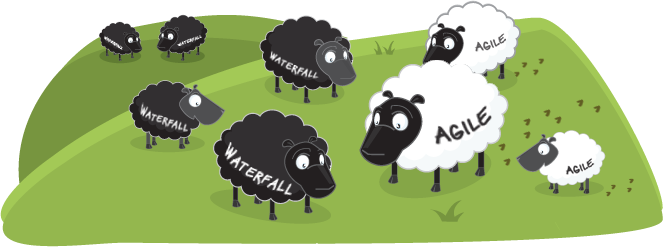Today I realized I've been supporting and advising a Federal Government PMO for a whole year. Prior to that, I was the Manager of Software Engineering at an online company that had recently gone public. I was the sole PMP (Project Management Professional) and sole Agile Evangelist. Upon my leaving that company, I told my superiors they really needed a PMO if they wanted to offer consistent results, measurable improvements, and increase stakeholder satisfaction. It was hard at first to shift gears, away from a private profit-driven organization, to Federal governance-driven organization. At the private company, it was all "being creative" to meet unrealistic goals set by those not versed in best practices. Since there were no other PMPs, I felt like the lone sheriff in the Wild West. Now that I'm dealing with the government, I'm surrounded by other PMPs. There is policy, process, and governance. Everyone knows their jobs very well. They know best practices. So you can differentiate the type of PMO I work in compared to others, I've included the 3 basic types below with their definitions.
There are 3 basic types of Project Management Office (PMO) organizations are [1] supportive, [2] controlling, [3] directive.
1. Supportive PMO generally provides support in the form of on-demand expertise, templates, best practices, access the information and expertise on other projects, and the like. This can work in an organization where projects are done successfully in a loosely controlled manner and where additional control is deemed unnecessary. Also, if the objective is to have a sort of 'clearinghouse' of project management info across the enterprise to be used freely by PMs, then the Supportive PMO is the right type.
2. Controlling PMO has the desire to "reign in" the activities - processes, procedures, documentation, and more - a controlling PMO can accomplish that. Not only does the organization provide support, but it also REQUIRES that the support be used. Requirements might include adoption of specific methodologies, templates, forms, conformance to governance, and application of other PMO controlled sets of rules. In addition, project offices might need to pass regular reviews by the Controlling PMO, and this may represent a risk factor on the project. This works if a. there is a clear case that compliance with project management organization offerings will bring improvements in the organization and how it executes on projects, and b. the PMO has sufficient executive support to stand behind the controls the PMO puts in place.
3. Directive PMO goes beyond control and actually "takes over" the projects by providing the project management experience AND resources to manage the project. As organizations undertake projects, professional project managers from the PMO are assigned to the projects. This injects a great deal of professionalism into the projects, and, since each of the project managers originates and reports back to the Directive PMO, it guarantees a high level of consistency of practice across all projects. This is effective in larger organizations that often matrix out support in various areas, and where this setup would fit the culture.
Definition Source: http://ezinearticles.com/?expert=John_Reiling
 Today was my last day with the PMO. I couldn't help but send an email to everyone before the SysAdmin locked all of my accounts.
I've already gone to security and turned in my badges. I've already talked to everyone I could find. It is Friday, ya know. You can't expect everyone to be in the office.
Today was my last day with the PMO. I couldn't help but send an email to everyone before the SysAdmin locked all of my accounts.
I've already gone to security and turned in my badges. I've already talked to everyone I could find. It is Friday, ya know. You can't expect everyone to be in the office.





